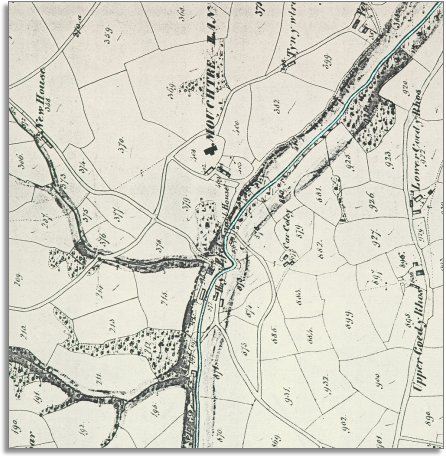The map below is based on a detail from the tithe map for Mochdre parish and it gives us a picture of the village in the early years of Queen Victoria's reign. Look below to find out more.
The
original map was not aligned with North at the top so we have turned it
round to make it easier to compare with later maps.

TITHE MAPS
In Victorian times almost everyone had to pay tithes to the Church of England. At the beginning of the reign the tithe became a tax on your property. The maps were drawn to see what property everybody had.
